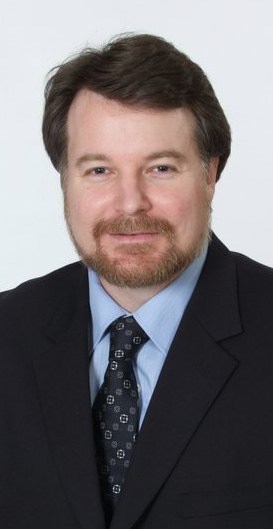VANCOUVER, B.C.
Much is being made of the fact that Mathieu Ravignat, the newly elected Quebec New Democrat who knocked off foreign affairs minister Lawrence Cannon, is among other things a karate instructor.
A good deal of the tone of this commentary is faintly mocking, as if running around in white pajamas yelling kee-yiy and whacking objects and people with fists and feet isn’t really a suitable activity for a grownup, and is therefore an apt metaphor for the inexperience of the new, much-larger NDP Parliamentary caucus.
The subtext to this mainstream media mockery, naturally, is the message that neither the new MP for Pontiac nor anyone else in the NDP will succeed, they’re a flash in the pan like the unlamented Action démocratique du Québec political party, the Liberals will be back, yadda yadda yadda.
Well, I’m here to tell you it ain’t so. In fact, you just can’t find better training for a life in politics than being a karateka, which is a student of karatedo, which is the way of living and getting along associated with the lifetime study of karate.
And if the media wants to make mild fun of Ravignat’s title sensei, which is merely Japanese for teacher and therefore an apt job description for someone who teaches a Japanese martial art, well so be it. I’m sure he can take it.
As a person who has spent a lot of time hanging around the dojo (that is the karate training hall) myself, I can tell you that one of the useful things karate teaches is discipline — which makes it unlikely you’ll fly off the handle in the face of the kind of immature provocation to be expected from the so-called Conservative benches.
On the other hand, if some Conservative-Reform-Alliance Party Coalition clown like Darrel Stinson looks like he’s going to stride across the floor of House of Commons to do violence to one of your NDP caucus mates, well, you’ll know what to do next, won’t you?
Ravignat practices an Okinawan form of karate called Goju-Ryu (which means hard-soft style, a reference to the fact some of its attacks utilize hard closed-hand blows, and some of its defences use soft and circular open-hand defences. (Moviegoers will recall Mr. Miyagi’s wax-on-wax-off instruction to the Karate Kid in the original movie of that name — this is a reference to the soft part. The founder of Goju-Ryu karate, by the way, was named Chojun Miyagi. But, je digresse…)
You probably won’t have read any mention of Ravignat’s karate style in the news coverage because that sort of thing is not very important to journalists, at least all but those very few who practice the martial arts themselves.
This is a pity, because there are a lot of different varieties of the martial arts and the style of karate (in Japanese, ryu) can tell us a lot about the practitioner.
The best analogy I can think of for this is Protestant churches. There are at least as many styles of Asian martial arts as there are Protestant denominations. Like Protestant churches, for the most part the doctrine is so similar that the differences only matter to insiders. But for insiders, those differences are big enough to make someone go out and put up a new building!
But the important thing to remember here is that Goju-Ryu is a style of karate that involves often having to stand still, every muscle flexed, controlling your breathing, while someone whacks you hard enough to leave bruises. (If this doesn’t sound like much fun to you, well, I guess you sorta have to be there. It’s like what St. Paul said, actually: “we also glory in our sufferings, because we know that suffering produces perseverance; perseverance, character; and character, hope.”)
If that’s not a great foundation for Question Period, what is?
Oh yeah, and it also turns out that just as there are office politics, union politics and church politics, there are karate politics too. But let’s spare readers the details of this unfortunate aspect of martial arts training, OK?
Also missed in all the media coverage, and surprisingly also on Ravignat’s karate club website, is the matter of his rank, other than the fact that he holds a black belt (of which there are 10 levels, called degrees or dan ranks, and a remarkable spread of talent and commitment).
This may not be important to you or the guy from the Globe and Mail, but it’s important to anyone in the martial arts because it tells us things about the recipient’s commitment and proficiency. Perseverance, determination, “stick-to-itiveness” are essential to progress in karate.
By contrast, we know everything we need to know about Lawrence Cannon when we learn that he was a former Liberal who turned coats, the scion of a well-connected and well-off family for whom a successful life in politics was made easy, and the kind of guy who had a history of shooting off his mouth in an unpleasant fashion at people he considered insignificant.
This, presumably, is what the media considers a good resume for a political career. Well, pardon me if I’ll vote for a sensei any time! After all, as is often said, karate begins and ends with respect.
The real Mr. Miyagi is reported to have said that “the ultimate aim of karatedo was to build character, conquer human misery, and find spiritual freedom.” If you ask me, this is a pretty good foundation for a career in public service.
I don’t know Mathieu Ravignat, who is also a government researcher with a masters degree in political science, but I’m prepared to bet on the basis of his involvement in karate that he’ll make a pretty good MP.
This post also appears on Alberta Diary. David Climenhaga holds the rank of nidan, second-degree black belt, in Uechi-Ryu karate, a style with certain similarities to Goju-Ryu.




